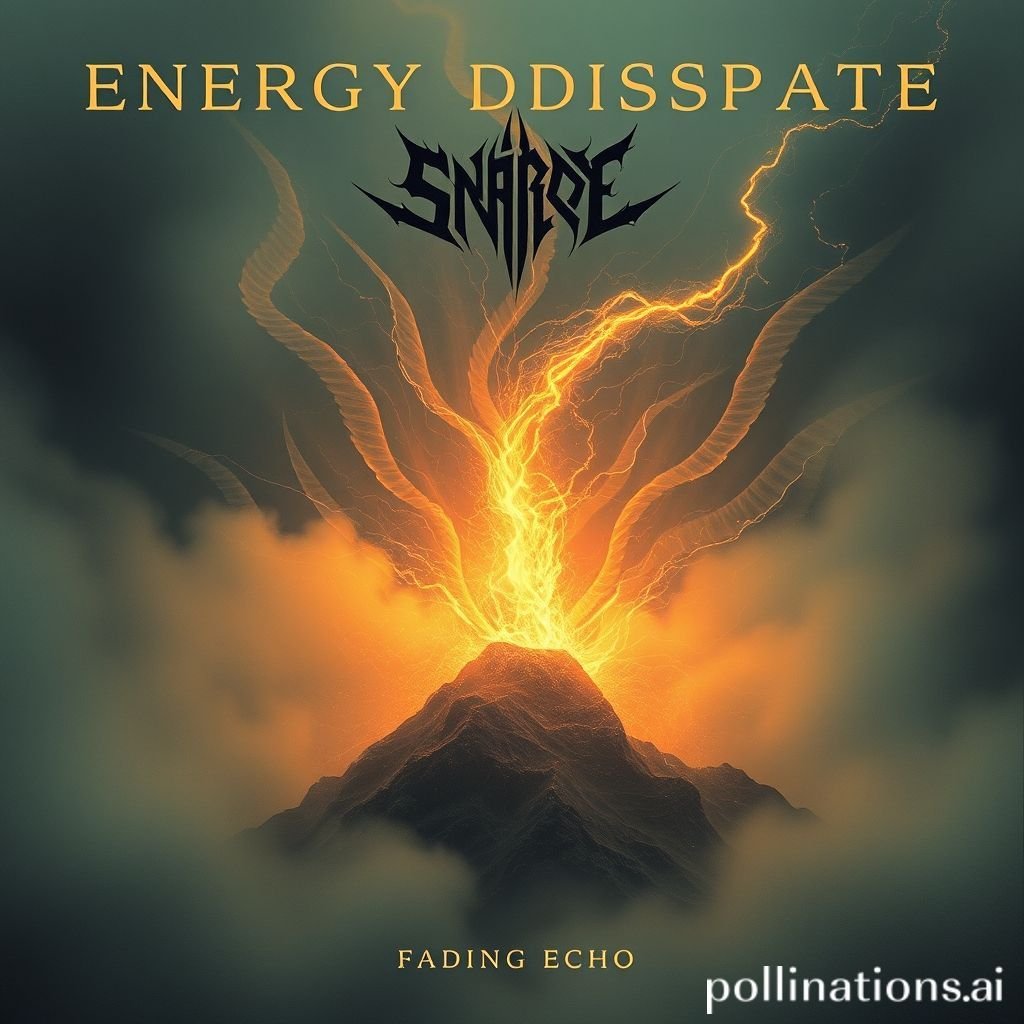Energy Dissipate - Fading Echo: Sound Decay Art
Master the art of sound decay with Energy Dissipate - Fading Echo. Enhance your magic and sci-fi scenes. Learn creative techniques for fading and magical audio effects.
Every burst of energy needs a graceful end. In sound design, this means mastering dissipation. It is the art of a fading echo. This crucial skill adds depth to any audio experience. Particularly in cinematic and gaming realms, sound decay is vital. It shapes audience perception. A well-designed dissipation can make a simple sound truly magical. It tells a story beyond the initial impact. This article explores how to harness this power. We focus on the "Energy Dissipate - Fading Echo" concept.
Applications in Media
Sound dissipation is a powerful tool. It transforms static audio into dynamic experiences. Think of a spell casting. The initial energy is loud. Then it slowly fades away. This adds realism and immersion. It helps the audience feel the remaining energy in the air. For sci-fi, it evokes advanced technology. The sound of a laser blast dissipates. This suggests its immense power. The effect is subtle yet profound. It influences emotional responses. A lingering echo can suggest mystery. A sharp decay implies finality.
Industry-Specific Uses
Game development benefits greatly from sound decay. Character abilities often have an audible energy signature. Their sounds need to dissipate properly. This indicates cooldowns or power levels. UI sounds also utilize this. A click might have a quick, satisfying decay. This confirms user input. User interface sounds, like a confirmation tap, gain clarity. UI Confirm Tap is a prime example. Movie scores use fading elements. This transitions between scenes seamlessly. Television shows employ it for dramatic effect. The sound of a distant explosion fades. This creates suspense. This subtle audio effect reinforces narrative tension.
Creative Techniques
Crafting unique fading effects is an art. Start with the initial energy burst. Then, decide on the decay curve. Is it linear? Or does it fade slowly at first, then quickly? A magical energy wave might have a long, ethereal fade. A futuristic weapon's shot could dissipate rapidly. Consider the environment. A sound in a large hall will have a longer echo. A sound in open space will fade quickly. Experiment with reverb and delay. These are key tools for shaping dissipation. They add richness to the decaying sound. This extends the perception of the original energy.
Technical Analysis
Understanding the technical aspects is crucial. It helps in precise sound shaping. Every sound has an initial energy. This energy then diminishes over time. This process is complex. It involves changes in amplitude and frequency. The "Energy Dissipate - Fading Echo" concept focuses on this very decline. It is about capturing that vanishing audio energy.
Waveform Characteristics
A sound's waveform shows its energy over time. For a dissipating sound, the amplitude decreases. It starts high and gradually lowers to silence. This is the decay phase. Examine the attack, decay, sustain, release (ADSR) envelope. The decay portion is what we manipulate. A slow decay means a long fade. A fast decay means a quick dissipation. The shape of this decay curve is vital. It dictates how the energy fades. Flat lines show constant energy. Descending curves show the energy dissipating.

Frequency Profile
As sound energy dissipates, its frequency profile often changes. High frequencies tend to decay faster in many environments. This leaves a warmer, duller sound as it fades. Think of distant thunder. You hear the low rumble, but not the sharp crack. This natural decay can be emulated. EQ adjustments help shape this. Gradually rolling off high frequencies during the fade adds realism. It makes the dissipation sound authentic. This frequency decay enhances the sense of distance. It also conveys a loss of initial energy.
Production Tips
Creating effective dissipating sounds requires careful production. It involves both recording and editing techniques. The goal is to capture or synthesize the perfect fading echo. Every detail matters for a convincing audio effect. The nuances of sound energy require attention.
Recording & Editing
When recording, consider the source of the energy. Use high-quality microphones. Capture clean audio. This provides a solid foundation. If recording real-world sounds, experiment with different environments. A large room offers natural reverb. This aids in creating dissipation. In editing, apply gentle fades. Avoid abrupt cuts. Use automation for volume control. This ensures a smooth decline in energy. Experiment with different fade curves. Nonlinear fades often sound more organic. They mimic natural sound decay.
Software Tools
Digital Audio Workstations (DAWs) are your best friends. Logic Pro, Ableton Live, and Pro Tools offer robust tools. Plugins for reverb and delay are essential. Convolution reverb can simulate specific spaces. This helps with realistic sound decay. Parametric EQs allow precise frequency shaping. Noise reduction tools clean up unwanted ambient sounds. Mastering plugins can subtly enhance the final output. These tools help shape the fading energy. Visit Pro Sound Effects for professional sound libraries and tools. They offer vast collections of sound samples.
Creative Implementation
Beyond technical skills, creativity is key. How you use the sound affects its impact. The "Energy Dissipate - Fading Echo" effect can be layered. It can be placed in a three-dimensional space. This elevates a simple sound to an immersive experience. Consider the narrative context for each fading sound.
Layering Methods
Layering multiple sound elements creates rich textures. Start with a core sound. This is the main energy source. Add a short, punchy transient layer. This gives impact. Then, layer in the dissipating element. This might be a synthetic decay or a long reverb tail. Blend these layers carefully. Adjust their individual volumes. Ensure a cohesive final sound. A magical spell might combine a chime, a whoosh, and a long, shimmering fade. This builds up the perception of its energy.
Spatial Effects
Spatialization makes sounds feel real. Use panning to place sounds in the stereo field. For a wider sound, use stereo reverb. 3D audio tools further enhance this. Sounds can appear to move or expand. An energy blast might start central. Then, its dissipating echo spreads wide. This creates a sense of scale. It makes the audience feel immersed. This adds to the sense of a grand magical event. It showcases the expansive nature of the fading energy.
Sound Pack Integration
Integrating "Energy Dissipate - Fading Echo" sounds from a pack streamlines your workflow. These pre-designed samples save time. They also ensure consistency in your projects. Understanding how to combine them is crucial.
Using with Other Sounds
Sound packs often contain related sounds. Combine your "Energy Dissipate - Fading Echo" with source sounds. Think of a "whoosh" or "hit" sound. Then, add the dissipation. Match the timing. Ensure the decay starts naturally from the initial impact. For Related Energy sounds, consider how they might complement. A sci-fi drone sound might slowly dissipate. This creates a sense of a dying machine. The fading echo should align with the initial burst of energy. This creates a cohesive audio sequence.
Complete Collection
A full sound pack offers comprehensive solutions. It provides various forms of sound energy. It also offers diverse dissipation styles. Having a library of "Energy Dissipate - Fading Echo" variations is invaluable. This allows for quick iteration and experimentation. You can find sounds for any scenario. This ensures your project always has the right audio. It helps portray the precise feeling of vanishing energy.
Get the full sound pack for comprehensive audio solutions.
FAQ Section
Q1: What is sound energy dissipation in audio design?
Sound energy dissipation describes how a sound's intensity, or energy, gradually decreases over time. It is the process of a sound fading away, often with lingering echoes or decay. This gives a sense of a sound's lingering presence.
Q2: How does the "Fading Echo" enhance magical scenes?
A fading echo adds an ethereal quality to magical sounds. It suggests residual energy from a spell or ability. This enhances immersion and mystery. The slow dissipation reinforces the magical nature of the event.
Q3: Can energy decay be used for sci-fi sound effects?
Absolutely. Energy decay is perfect for sci-fi. It can represent power surges, dying machines, or the aftermath of laser blasts. The slow dissipation of sound energy adds realism to futuristic technology.
Q4: What are key tips for effectively dissipating sound?
Focus on gradual volume automation. Use natural reverb or delay. Experiment with frequency roll-offs. Ensure the sound's initial energy transitions smoothly into its decay. Listen carefully to the overall effect.
Q5: Where can I find high-quality "Energy Dissipate" sound samples?
Many professional sound libraries offer such samples. Look for sound packs specializing in magic, sci-fi, or abstract effects. Websites like Pro Sound Effects offer extensive collections. They provide a wide range of sound samples for dissipating energy.





